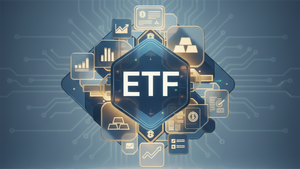
Apple's (NASDAQ: AAPL) latest flagship, the iPhone 17 series, has emphatically surpassed initial pre-order projections, signaling robust consumer demand and igniting a significant production ramp-up across its global supply chain. The extraordinary early sales performance, particularly for the high-end iPhone 17 Pro Max and the base iPhone 17 in key international markets, underscores Apple's enduring brand power and its ability to stimulate a powerful upgrade cycle amidst evolving market dynamics. This unprecedented demand has immediate implications for Apple's revenue forecasts, its extensive network of suppliers, and the broader smartphone industry, which is now closely watching how competitors will respond to this renewed vigor in the premium segment.
The overwhelming response to the iPhone 17 has prompted Apple to accelerate manufacturing schedules, with significant increases in planned unit production for the latter half of 2025. This strategic pivot to higher volumes, coupled with a landmark decision to fully manufacture all iPhone 17 models in India ahead of launch, highlights Apple's efforts to diversify its supply chain and meet an anticipated surge in holiday season sales. While initial market reactions to Apple's stock were cautiously mixed following the product unveiling, the undeniable strength of pre-order numbers provides a powerful counter-narrative, suggesting a bright outlook for the tech giant in the coming fiscal quarters.
Pre-orders Soar: What Happened and Why It Matters
The pre-order phase for the iPhone 17 series, which kicked off on September 12, 2025, ahead of its official sales launch on September 19, 2025, has delivered exceptional results. Early data indicates that first-weekend pre-order demand for the iPhone 17 family was approximately 25% higher than that of its predecessor, the iPhone 16 series, a year prior. Analyst firm Wedbush Securities initially projected a more conservative 5-10% increase, underscoring the surprising strength of consumer appetite.
A significant driver of this surge has been the iPhone 17 Pro Max, which saw its demand jump by an astounding 60% compared to the iPhone 16 Pro Max. The new "Cosmic Orange" variant, in particular, proved to be an instant sell-out, leading to immediate back-orders and extended shipping delays. Beyond the Pro Max, the base iPhone 17 with 256GB storage also emerged as a strong performer, especially in China, where it was the most popular model. Its appeal is attributed to notable upgrades, including a larger 6.3-inch 120Hz ProMotion display, a 48-megapixel ultra-wide lens, an upgraded 18-megapixel front camera, and a doubled base storage capacity to 256GB, all while maintaining an attractive $799 price point. In China, pre-orders on platforms like JD.com reportedly exceeded the entire first-day volume of the iPhone 16 series within minutes, while India saw a 30-40% increase in first-weekend pre-bookings. The new iPhone Air, an ultra-thin model replacing the iPhone 16 Plus, had a more tempered reception in terms of pre-order demand, though its significantly higher production volume (approximately three times that of the iPhone 16 Plus) suggests Apple's strong internal expectations for the model.
Despite the undeniably strong pre-order figures, Apple's stock (NASDAQ: AAPL) initially experienced a cautious market reaction. Following the "Awe Dropping" launch event, the stock dipped by 1.5% on September 9 and an additional 3.2% on September 10, shedding $56.8 billion in market value between September 9 and 12. Some analysts attributed this initial hesitancy to a perceived lack of revolutionary AI advancements, leading to a "buy the rumor, sell the news" scenario. However, this sentiment quickly shifted as pre-order data became public. Goldman Sachs, for instance, reiterated a "Buy" rating on Apple, citing "strong iPhone 17 demand signals." Analysts like Wedbush Securities and Ming-Chi Kuo also expressed optimism, highlighting that the extended lead times across all iPhone 17 models in major global regions—including the USA, Mainland China, Japan, the UK, India, and Hong Kong—are clear indicators of robust demand. The base iPhone 17 and iPhone 17 Pro Max both saw their pre-order lead times increase by eight days compared to their predecessors.
To keep pace with this surging demand, Apple has initiated a substantial production ramp-up for the iPhone 17 series. The planned Q3 2025 production for the iPhone 17, 17 Pro, and 17 Pro Max models is approximately 25% higher year-on-year compared to the iPhone 16 range. Specifically, production builds for the highly popular iPhone 17 Pro Max have surged by about 60% year-on-year. Even the iPhone Air, despite its comparatively softer launch sales, is set for a significant build plan, roughly three times higher (~+200% YoY) than that of the iPhone 16 Plus in Q3 2024, ensuring ample availability. Overall, Apple is poised to produce between 86 million and 90 million iPhone 17 units in the second half of 2025. Crucially, in a landmark strategic move, Apple will, for the first time, manufacture all four models of the iPhone 17 series entirely in India ahead of its launch, utilizing expanded facilities by Tata Group and Foxconn (TWSE: 2317). This move not only signifies a diversification of Apple's global supply chain but also highlights India's growing importance as a manufacturing hub, with India-made iPhones already accounting for approximately 20% of worldwide production for the fiscal year ending March 2025.
The Financial Ripple: Winners and Losers in the Wake of iPhone 17
The success of the iPhone 17 series will send direct and indirect financial ripples across the technology sector, creating clear beneficiaries among Apple's extensive supply chain and presenting intensified challenges for its direct competitors. With Apple reportedly aiming for 100 million iPhone 17 units in 2025, the volume alone guarantees significant revenue boosts for key players.
Leading the charge among the "winners" are Apple's primary component suppliers. TSMC (Taiwan Semiconductor Manufacturing Company - TWSE: 2330 / NYSE: TSM) stands to be a colossal beneficiary, serving as the exclusive manufacturer of Apple's advanced 3nm A19 and A19 Pro chips for the entire iPhone 17 lineup. These chips are projected to constitute over 30% of TSMC's 2025 revenue, underscoring its pivotal role. Similarly, Qualcomm (NASDAQ: QCOM), despite Apple's long-term goal for in-house modems, will continue to supply 5G modems for most iPhone 17 models in the near term, capitalizing on the immense production scale. Memory suppliers like Samsung (KRX: 005930) and SK Hynix (KRX: 000660) are also poised for substantial gains, collectively securing a dominant share of DRAM and NAND memory orders for the new iPhones.
In the display sector, Samsung Display (part of Samsung, KRX: 005930) is reportedly the sole OLED panel supplier for all four iPhone 17 models, delivering advanced M14-based OLED technology. LG Display (KRX: 034220) will also contribute LTPO OLED panels, securing robust orders. Contract manufacturers, the backbone of Apple's assembly, will see their facilities operating at full capacity. Foxconn (Hon Hai Precision Industry Co. Ltd. - TWSE: 2317) is adjusting its targets to 90 million units annually, with significant production shifts to India. Other manufacturers like Pegatron (TWSE: 4938) and India's Tata Group will also play crucial roles in this expanded manufacturing footprint. Camera module specialist LG Innotek (KRX: 011070) will benefit from increased orders for the sophisticated iPhone 17 Pro cameras, including folded zoom modules, while battery suppliers such as TDK Corporation (TYO: 6762) could see higher demand for their advanced battery cells, especially for thinner models like the iPhone Air.
Conversely, major smartphone competitors face renewed pressure. While Samsung (KRX: 005930) benefits as a component supplier, its own smartphone division faces intensified competition in the premium segment. Strong iPhone 17 sales could challenge Samsung's recent gains in global market share, compelling it to accelerate innovation in its Galaxy S25 and upcoming foldable series. Google's (NASDAQ: GOOGL) Pixel line, despite its impressive year-over-year growth, will find it even harder to carve out significant market share against Apple's reinforced dominance, necessitating more aggressive innovation in AI and hardware. Even Xiaomi (HKEX: 1810), which has shown strong growth in the premium segment and briefly surpassed Apple in global sales, will feel the squeeze. The iPhone 17's reassertion in the high-end market will require Xiaomi to implement even more strategic marketing, competitive pricing, and accelerated flagship releases to maintain its trajectory, particularly as its iPhone Air competitor has faced regulatory delays in China.
Industry Impact and Broader Implications
The exceptional performance of the iPhone 17 series transcends immediate sales figures, offering a potent barometer for broader industry trends, revealing ripple effects across the global technology ecosystem, and highlighting significant geopolitical and regulatory shifts. This event squarely places Apple at the forefront of the ongoing "premiumization" trend in the smartphone market.
The strong demand, especially for the high-end iPhone 17 Pro Max and the increased average selling prices achieved through strategic storage upgrades and model differentiation, underscores that consumers are increasingly willing to invest in premium, feature-rich devices. The premium segment (over $600) continues to outpace overall market growth, now accounting for over 60% of global smartphone revenues, and Apple is expertly capitalizing on this shift. This success reassures investors about the overall health of the smartphone market, particularly in the wake of concerns about saturation, with widespread 5G adoption and nascent generative AI capabilities serving as key growth drivers. However, some analysts note that Apple's AI advancements in the iPhone 17 were perceived as modest compared to more aggressive strategies from rivals, potentially impacting its long-term differentiation.
The ripple effects extend profoundly to both competitors and the global supply chain. For rivals, the iPhone 17's robust launch intensifies the competitive landscape. While Apple is projected to potentially reclaim its spot as the world's largest smartphone manufacturer, companies like Huawei (SHE: 002502) and Honor are regaining ground in China, and Xiaomi (HKEX: 1810) continues aggressive growth. Apple's cautious stance on AI could provide an opening for these competitors to highlight their own innovative AI integrations. For partners, the overwhelming demand has already stretched the supply chain, leading to extended lead times of up to five weeks for some iPhone 17 models in critical markets like Mainland China, emphasizing the perennial challenge of supply chain optimization.
A pivotal broader implication is Apple's strategic and unprecedented manufacturing diversification to India. For the first time, all four iPhone 17 models are being manufactured entirely in India for the U.S. market from launch. This move, driven by geopolitical risks, trade war anxieties, and lessons from past disruptions, aims to reduce Apple's over-reliance on China. While India currently accounts for about 18% of global iPhone production, Apple targets significant expansion. This shift is not without challenges, including potentially higher production costs, quality control hurdles, infrastructure limitations, and even geopolitical tensions manifesting in reports of Chinese officials curbing tech exports to India. However, it strategically aligns with India's "Make in India" initiative, offering Apple benefits like avoiding the 20% Basic Customs Duty and leveraging India's Production Linked Incentive (PLI) scheme, ultimately bolstering India's electronics sector and securing Apple's supply lines against global volatility.
Historically, Apple has consistently demonstrated an ability to redefine markets with products like the Macintosh, iPod, and the original iPhone (2007), which ushered in the "app economy" and fundamentally reshaped multiple industries. The iPhone 17's strong pre-order momentum aligns with this historical pattern of intense consumer enthusiasm and meticulous market penetration. Furthermore, Apple's current strategy extends beyond product innovation to business model innovation, focusing on its services ecosystem, privacy, and integration within its broader device family. The supply chain diversification to India is also a continuation of Apple's long-standing recognition of geographical concentration risks, a strategic evolution to mitigate future disruptions.
What Comes Next
The immediate future for Apple (NASDAQ: AAPL) and the smartphone market will be defined by the sustained momentum of iPhone 17 sales, the resilience of the global supply chain, and the competitive responses from rival manufacturers. In the short term, Apple is poised for a robust holiday sales season, buoyed by the strong pre-order performance. Investors will keenly watch for quarterly earnings reports that confirm these sales trends and provide further guidance on production targets and revenue. The focus will be on whether the extended delivery times can be mitigated effectively to prevent customer frustration and whether the new manufacturing hubs in India can maintain quality and efficiency at scale.
In the long term, the iPhone 17's success solidifies Apple's premium market leadership and sets the stage for future product cycles. Apple's strategic diversification into India signals a significant shift in global electronics manufacturing, with potential ripple effects for other multinational corporations seeking to de-risk their supply chains from over-reliance on single regions. This could lead to further investment and development in emerging manufacturing hubs. Market opportunities will arise for companies that can efficiently serve Apple's expanded Indian manufacturing operations, from logistics to local component sourcing. Challenges, however, will persist, particularly in maintaining rapid innovation in AI and other advanced technologies to differentiate against increasingly capable Android rivals who are aggressively integrating next-gen features.
Potential scenarios range from continued stellar sales leading to record quarters for Apple and its top-tier suppliers, to unforeseen supply chain bottlenecks or heightened geopolitical tensions impacting production. Should the iPhone 17 maintain its unprecedented sales pace, it could accelerate the premiumization trend across the industry, forcing competitors to either innovate more rapidly or pivot to more niche markets. Apple may also adapt its strategic approach to AI, potentially unveiling more aggressive AI features in subsequent software updates or future hardware iterations, based on competitive pressures and consumer feedback. The performance of the iPhone Air model, with its ambitious production targets, will also be a key indicator of Apple's success in broadening its thin-and-light offering.
A Lasting Impact on the Tech Landscape
The overwhelming pre-order success of the iPhone 17 series marks a significant moment for Apple and the broader technology landscape, confirming Apple's undiminished brand strength and its capacity to drive powerful upgrade cycles. Key takeaways from this event include the profound consumer appetite for premium smartphone experiences, Apple's strategic dexterity in both product innovation and supply chain management, and the increasing importance of diversified global manufacturing. The iPhone 17's initial reception strongly suggests a robust financial performance for Apple in the coming quarters, potentially cementing its position as the world's leading smartphone manufacturer.
Moving forward, the smartphone market will continue its trajectory towards premiumization, with consumers valuing advanced features, design, and ecosystem integration. Apple's strong showing will undoubtedly intensify competition, compelling rivals like Samsung (KRX: 005930), Google (NASDAQ: GOOGL), and Xiaomi (HKEX: 1810) to redouble their efforts in innovation, especially in the burgeoning field of generative AI, where Apple has, so far, adopted a more measured approach. The unprecedented shift of full iPhone 17 manufacturing to India is not merely an operational adjustment but a geopolitical statement, heralding a new era of global supply chain resilience and potentially sparking a broader exodus of manufacturing from traditional hubs.
Investors should closely monitor several critical indicators in the coming months: Apple's official sales figures for the holiday quarter, the ability of its diversified supply chain to meet demand without significant delays, and the financial performance of key suppliers such as TSMC (TWSE: 2330 / NYSE: TSM), Foxconn (TWSE: 2317), and LG Innotek (KRX: 011070). Furthermore, watch for competitive responses from Android manufacturers, particularly concerning their AI strategies and premium device launches, which will shape the long-term dynamics of the global smartphone market. The iPhone 17's journey has just begun, but its initial trajectory points towards a lasting and significant impact on how technology is made, sold, and consumed worldwide.





